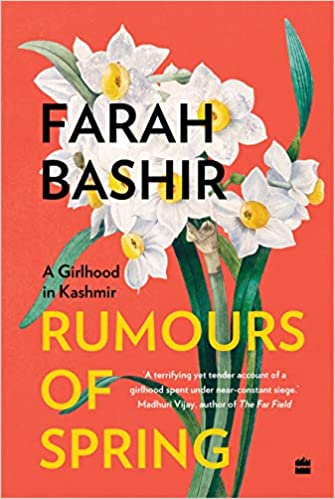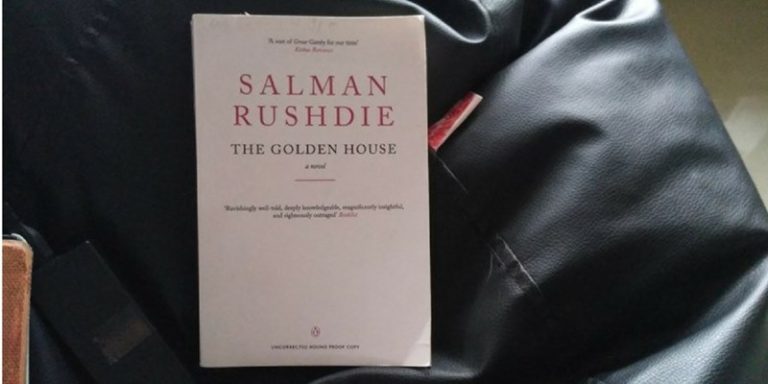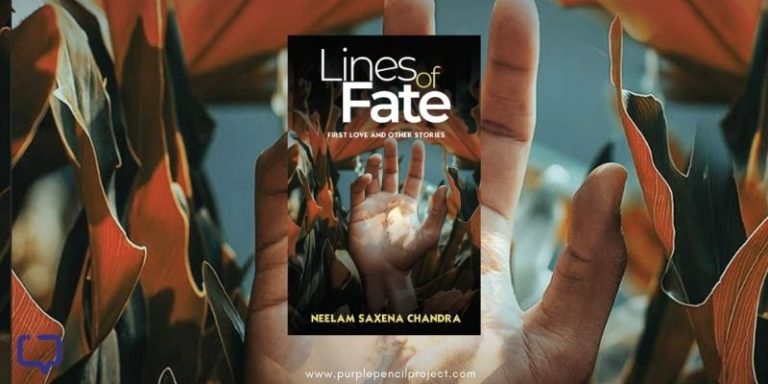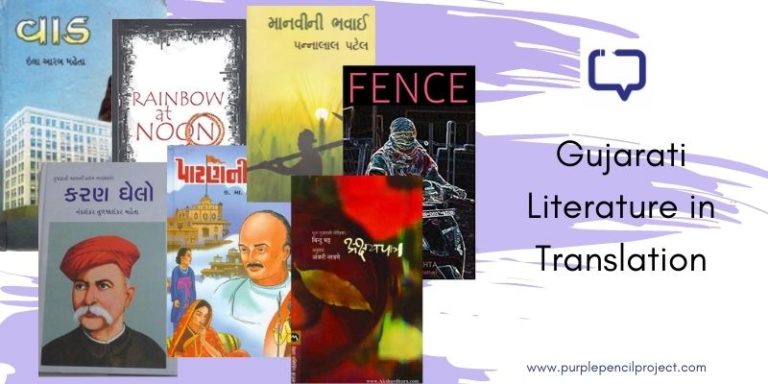Rumours of Spring is a part of our series, Kashmir Files, which seeks to present multiple perspectives on the history and social reality of the valley, and the people of Kashmir.
Rumours of Spring by Farah Bashir is a poignant memoir of girlhood on the backdrop of ceaseless terror and turmoil of smouldering Kashmir. Bashir does an excellent job at capturing the adolescence in the late 1980s to 1990 Kashmir and leaves the readers bleeding in search of peace.
We encourage you to buy books from a local bookstore. If that is not possible, please use the links on the page and support us. Thank you.
A story of many stories
Rumours of Spring centres around the protagonist, a teenager confronted with the death of her grandmother. This sets the stage for the recollection of enumerate chronicles scented with the melancholy of a generation vanquished by the world around them.
The novel is essentially a consortium of stories, an anthology of maladies that Kashmir has been subjected to after the insurgency of 1989 and, the political pandamonium and military mobilization that followed. On every new page in the book, the teenage protagonist narrates another tragic story of acquaintances who have suffered at the hands of the army and the militia. In a way, on every new page, the angst of a people who were denied even the faculty to dream pounce at you and dare you to look away.
From the incessant hair picking of the protagonist to the death of an elderly for opening the window for fresh air during curfew, the story forces you to remember the grief of a generation we were too quick to forget. The narrator elaborates on how torment slowly leaks into the mundane things in life, seeping into the inner workings of inhabitants’ minds and corroding the last drop of hope left. The death of the grandmother, who had died of natural causes even starts to seem uncanny when narrated against the backdrop of so many abnormal deaths.
Method in madness
Rumours of Spring is an ambitious attempt by Bashir, in terms of the narrative style and structure. The central narrative is not necessarily eventful, nor does the plot evolve through the book. But the myriad short narratives that the author offers through the eyes of a teenager form a coherent literary piece. The pensive tales of Kashmir are sprinkled with bits of practices of superstitions, which adds to the claustrophobia that the story evokes in the reader.
The personal is the political
Another feature of the novel is the lack of explicit political expositions. The stories are presented as they are, raw and untouched, and entirely humane. The politics of the land, which certainly cannot be hidden or washed over, are hardly mentioned directly. But it is in this that lies the beauty of the story.
While it avoids explicit proclamation of its politics, it incubates the reader in the despondency of her people and goads you to think about how the larger political realities affect the mundanity of our everyday lives and change its arc forever.
One excellent example of how the narrative leaves hefty weight in the reader’s mind without saying much is the part where she talks about heartbreak after her brief love affair. The only plausible communication between the narrator and her lover is through letters since the telephone lines are almost always dead. She most nonchalantly explains how her love affair died with the arson of the post office. She writes:
That wasn´t surprising, because living in a conflict zone had taught us that the broken stayed broken for a long time.
This is written neither as a complaint nor a lament of the loss of her first love, it’s merely stated matter-of-factly. The story gestures how the loss of innocent people, being evicted from your own home, the disappearance of a brother, or death is the definition of routine for those living in a conflict zone. Events, that we would otherwise deem as once-in-a-lifetime, are everyday realities. Bashir continuously encaptures the desolate air that encapsulates Kashmir, and plunges the readers into it, such as in the moment when she writes:
To expect change in the season in a month´s time felt less like a reality but more like rumours of spring.
Rumours of Spring; the title
The review is incomplete without mentioning the title. Some book titles have the power to say volumes with just a couple of words that they comprise. Rumours of Spring: A Girlhood in Kashmir successfully sets the atmosphere for the eerie narrative of a girl who lived under constant siege, which the book delivers.
Rumours of Spring is an ambitious attempt from Bashir to retell the stories of grief of a generation embroiled in military occupation. It dares the readers to remember the wrongs done to the people of Kashmir that we have been too fast to forget, and too quick to blame. It leaves a mark of agony in the mind of the readers and compels them to reflect on where they stand.





















